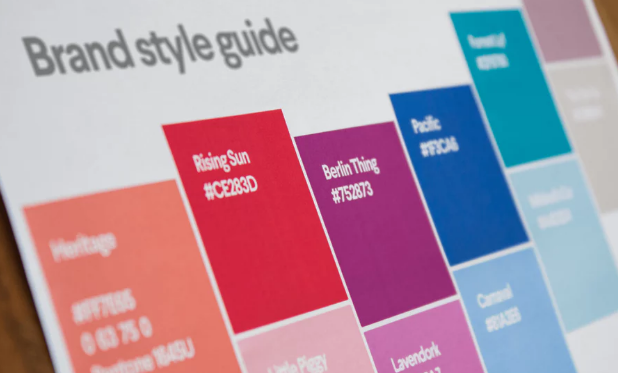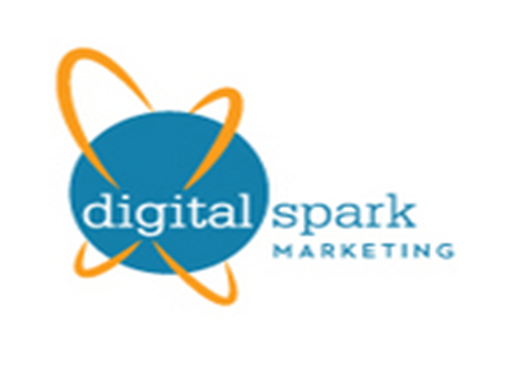You had a great idea, so you decided to launch your own business. To make sure it’s going to be successful, you write a business plan and keep an eye on your brand guidelines.

You learn from your competitors including what they’re doing and strive it to do better—including keeping your social media assets on point. You make sure all your assets are using the optimal image sizes for every channel, and you create content that stands out from the crowd.
Do you think you’re doing enough?
Actually, no matter how hard you work on your SEO and social media presence, one thing would stick with your audience: your brand. Therefore, you shouldn’t only focus on strengthening your unique selling point—you have to pay attention to your branding too. To do that, you need to create brand guidelines.
Why are brand guidelines important?
Think of brand guidelines as your company’s story at a glance. While it may be useful as an onboarding material, it also ensures that all your collaterals and messaging are aligned, helping your branding remain consistent across all platforms.
Brand guidelines also contain your company’s heart and soul, or, as some refer to it, your change story, mission, and vision. This highlights who you are, where you are, and where you want to go. It also highlights what your customers can expect from you.

See, today’s customers focus on buyer journeys. As Frontify points out, there is an infinite supply of products and services. So for your brand to stand out, especially if you’re a small business, you need to enhance your consumer’s journeys, and make sure that at the end of the day, you stay on top of your customers’ minds.
Additionally, the trends in branding for 2019 gives the power to the audience. To put it in simple terms, brands are influenced by their audiences, and brands adapt accordingly.
According to Entrepreneur, brands are becoming more personal in 2019, and not too corporate. This means customized services, tapping relatable influencers, and creating a brand persona that customers can identify with. This trend of customer-centric branding makes sense, as brands would have to adapt to the ever-changing technology and demands of the market.
Now, are you ready to make your brand guidelines? Here’s a handy list to get you started.
What should be in your brand guidelines?
As was briefly mentioned above, brand guidelines contain more than your brand’s colors and messaging. It primarily contains the following:
- Your logo – Your logo is an integral part of your company. Your brand guidelines should contain different sizes of your logo, its ideal placement, the spacing required around it, and variations of it. A common rule of thumb is to have a logo that would stand out from the background. You should have a logo for light or dark backgrounds.
- Your typography – Most companies use specific fonts for their messaging – the usage of this font and sizes, particularly for the headlines, sub-headlines, and body.
- Other graphics assets – This includes your company colors, letterheads, business cards, and imagery rules, among others. Essentially, this section talks about what kind of images you should use and how to use them in your collaterals.
- Your story – Modern companies include their brand’s story, which answers why the company exists in the first place. This is important since this sets the tone of how you want your brand to communicate.
- Your mission, vision, and values – This may be old school, but these are the guiding principles of your brand. This helps both your customers and employees understand what you want to stand for and how you intend to get there.
There you have it. Now that you know what you should put in your brand guidelines, it’s time to create one for your small business.
How to make brand guidelines in 2019
Times are constantly changing, and with it is the demand for companies to keep up with their audiences. By updating your brand guidelines to the trends of 2019, you should be able to compete in your niche again in no time.
Step 1: Start with a compelling brand story
Your brand story should be able to draw people in and create trust between you and your audience, employees, and customers. Neil Patel advices that you use a straightforward approach: identify your problem, the solution, and its road to success.
Talk about the story as it shaped your company’s reason for existing. If you do it effectively enough, your customers are going to want to be a part of your story and not just buy your products. However, remember to keep your story simple, though. Too many twists and turns and you might lose customers’ interest.
Step 2: Know why you want to have brand guidelines
Companies should establish brand guidelines for a reason. Most do so to create consistency across all assets, others want to refresh their look and feel, while some want to appear more credible to their users. Whatever the case may be, knowing why you want to update your branding is going to be instrumental into figuring out what you need to put in your guidelines in the first place.
Step 3: Conduct intensive market research
Ample research is required before you can create your brand guidelines. You need to know these five things before you can effectively set out your new branding: your audience, your company’s mission, your unique value proposition, your competition, and your brand personality. These things will help you create a holistic branding model. Remember, you want your audience to relate to you, so you have to understand them before you go ahead and try to sell your story to them.
Step 4: Think about your brand style
This is where the visual elements of your branding come into play. You need to start simple and build upon your idea from there. For example, think of Apple’s legendary logo. The logo of a bitten apple became synonymous with one of the most successful companies in history. When you design your brand style (think logo, visualization, and your colors), remember to go back to your audience and think of their preferences. Would your design appeal to them? If not, go back to the drawing board and start again.
Step 5: No to word padding
It may be tempting to use unique words, but what does your good content matter if no one can understand them? Avoid using industry-specific jargon. This cannot be emphasized enough, but remember that you are trying to make the brand relatable to your audience. If you inculcate unnecessary jargon in your branding, then you run the risk of losing potential clients who are unfamiliar with your industry’s terms.
Step 6: Run with it
Finally, go ahead and distribute your new materials to your audience to see how your audience responds to it. While it may be too late to take back a logo if the audience doesn’t fall in love with it, at least you would be able to subtly tweak some aspects that aren’t resonating with them.
Best branding practices
The above tips should guide you into creating a compelling story and brand guidelines that are in line with the trends of 2019. Here are some great branding examples:
Animal Planet strongly elicits an emotional response from their messaging. Majority of those who watch their shows feel a profound connection with the animals, particularly sadness when they see such majestic beings being maltreated.
However, this sadness is tantamount to Animal Planet’s branding strength: the storytelling connects with the audience, and in doing so, does a great job of keeping Animal Planet memorable.
IYou know Google and its iconic logo. Sometimes, even the Google “G” or the dots are enough to identify the brand. This is a study of simple, concise, and on point. This also clearly illustrates that you don’t need a complex brand logo—sometimes the simpler the design, the more it resonates with the audience.
Walmart
Walmart has a very appealing brand story. As its founder says, “The feeling our customers have when they leave the store determines how soon they’ll be back.” This reinforces the brand’s tagline of “Save Money. Live Better,” from which the yellow spark emerged.
Today, Walmart’s logo is recognized all over America, and the message that it is where you go for affordable and high-quality purchases is also top of mind.
Did we miss anything? Let us know what works for you in the comments below!
All you get is what you bring to the fight. And that fight gets better every day you learn and apply new ideas.
When things are not what you want them to be, what’s most important is your next step. Call today.
Test. Learn. Improve. Repeat.
Are you devoting enough energy to improve your advertising design?
Do you have a lesson about making your innovation better you can share with this community? Have any questions or comments to add in the section below?
Mike Schoultz is the founder of Digital Spark Marketing, a digital marketing and customer service agency. With 40 years of business experience, he blogs on topics that relate to improving the performance of your business. Find them on G+, Twitter, and LinkedIn.
Digital Spark Marketing will stretch your thinking and your ability to adapt to change. We also provide some fun and inspiration along the way. Call us for a free quote today. You will be amazed how reasonable we will be.
More reading on advertising from Digital Spark Marketing’s Library:
What to Expect from a Creative Advertising Strategy
Creative Secrets from Budweiser Advertising Examples
Prudential Ad Makes Visualization Design Central to Story

